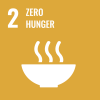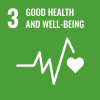This intervention addresses the WEFE nexus problem by integrating renewable energy and sustainable farming practices. The use of solar panels reduces reliance on outdated energy infrastructure, lowering costs and greenhouse gas emissions, while the hydroponic units optimise water use, minimising waste and pollution.
The Beqaa Valley, Lebanon’s primary agricultural hub, faces severe challenges including water scarcity, pollution from wastewater and agricultural runoff, land degradation, and energy shortages. Over-extraction of groundwater and poor resource management, combined with Lebanon’s financial crisis and political instability, have further exacerbated the situation. Farmers, private sector actors, and public institutions struggle with high energy costs, water scarcity, and weak governance. Environmental corruption, driven by inefficient policies and limited enforcement, was identified by stakeholders as a central issue. Addressing these interconnected water, energy, food, and ecosystem (WEFe) nexus challenges requires sustainable technical, financial, and managerial interventions.
The BONEX demonstration project at the American University of Beirut (AUB) aims to:
- Provide a solar-powered hydroponic system as a technical intervention to optimize water, energy, and food resources.
- Reduce reliance on outdated and costly energy infrastructure by integrating renewable solar power.
- Minimize water use and pollution through closed-loop hydroponic systems.
- Enhance food production and quality while reducing greenhouse gas emissions.
- Involve stakeholders in co-designing interventions and building awareness, capacity, and acceptance.
- Explore policy, financial, and institutional pathways to make solar-hydroponics viable and scalable in Lebanon.
- Technical Intervention: A solar-powered greenhouse was established at AUB with three hydroponic systems (nutrient film technique, rotating towers, and gutter systems). Solar panels installed on the roof generate renewable energy for operation.
- Participatory Process: Stakeholders (farmers, private sector, ministries, NGOs) were engaged in workshops to map nexus relationships, validate causal loop diagrams, and identify barriers and opportunities.
- Surveys & Assessments: Conducted socio-economic surveys and value assessments to understand community perceptions of water, energy, food, and ecosystems.
- Complementary Measures: Identified financial incentives (grants, subsidies), technological innovations (local manufacturing, 3D printing), and institutional arrangements (recognition of hydroponics as formal agriculture, policy support).
- Partnerships: Collaboration between AUB researchers and Beirut Farm to link academic research with practical implementation.
- Water Efficiency: Hydroponic system uses ~40.6 mm/year compared to 150–200 mm/year in conventional greenhouses, showing significant water savings.
- Energy Integration: Generates ~3,627 kWh of solar power per cycle, covering a substantial portion of the 7,600 kWh demand, reducing dependence on fossil fuels.
- Food Productivity: The farm currently grows crops like basil, kale, lettuce, arugula, baby spinach, green peppers, tomatoes, and strawberries—producing around 2,300 plants in total. It yields up to 28 Romaine lettuce heads/m² per harvest, higher than traditional greenhouse production.
- Stakeholder Engagement: Strong involvement of farmers, NGOs, and government representatives; co-creation of solutions.
- Policy Alignment: Intervention aligns with Lebanon’s National Agriculture Strategy 2020–2025 on sustainability and climate change adaptation.
- Knowledge Transfer: Academic–industry partnership enhanced both technical performance and practical adoption potential.
- Lessons Learned:
- High upfront investment remains a major barrier, requiring external financial support.
- Relocation of the greenhouse due to conflict demonstrated the resilience of controlled systems.
- Awareness campaigns and education are vital to increase acceptance of hydroponics in Lebanon.
- Collaboration between academia and industry is essential to bridge the gap between research and practice.
- Replicability:
- The system design (closed-loop, modular hydroponics with solar power) is adaptable to various environments.
- Lessons from the participatory approach can be applied in other Mediterranean countries facing similar WEFe nexus challenges.
- Scalability Potential:
- Expansion possible with institutional recognition of hydroponics, financial incentives, and integration into national agricultural strategies.
- Upscaling requires careful balancing of trade-offs between increased food production and higher energy consumption.
- Public-private partnerships, international donors, and supportive policies can accelerate deployment across Lebanon and the wider region.







